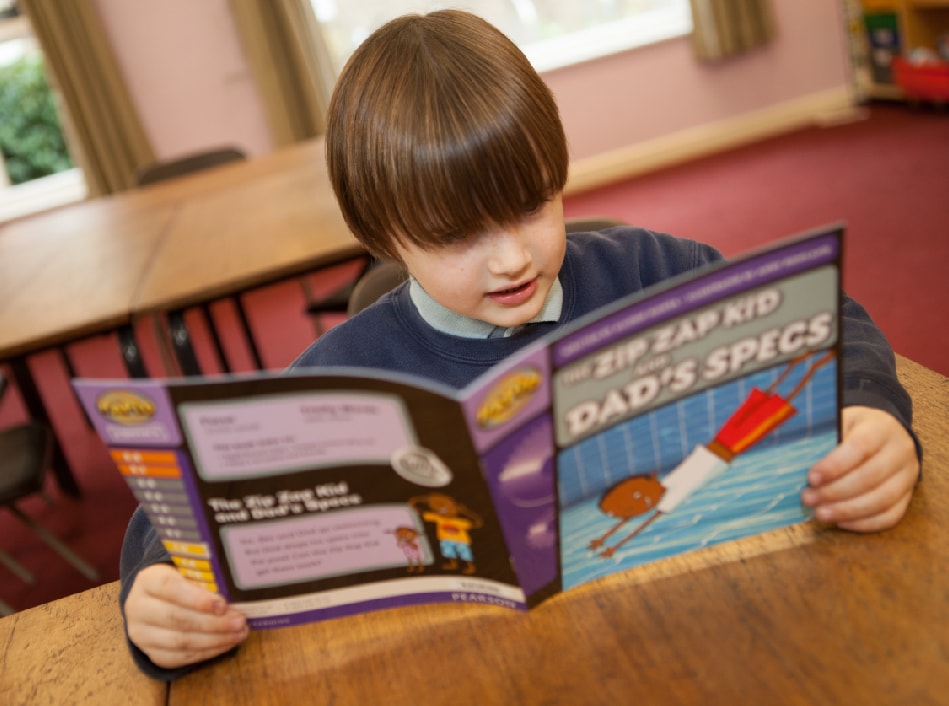Stepping forward: Comprehension at KS1

At the same time that the government published the KS2 teacher assessment exemplifications, it also published guidance for KS1 teacher assessment, and though most of the guidance was as expected with regards to phonics and reading fluency there were a few interesting points.
As we see the shift from ‘word reading’ to ‘comprehension’ at the end of Key Stage 1 there’s an opportunity to question what comprehension looks like in KS1.
A subtle change in language and terminology
We’ve heard all sorts of ‘bands’ applied to age-related expectations since the removal of levels which came with the introduction of the new 2014 curriculum in England. Terms such as ‘exceeding expectations’, ‘working above age-related expectations’, ‘working at the expected level’, ‘secure’, ‘exceeding’, ‘mastery’, ‘excelling’ … the list goes on. Just as we were getting used to those, however, we’re now seeing a slight evolution of the terminology employed by the government, for example from ‘exceeding’ to ‘working at a greater depth’ in the latest exemplifications.
So what does ‘working at greater depth mean’?
Let’s start with what it doesn’t mean. What it doesn’t mean is reading ever longer books or racing through book bands. It’s not about whether a child has read War and Peace versus enjoying a high quality picture book. All too often the number of pages in a book is held as a trophy of how ‘good’ a child is as a reader with ever longer books signalling ‘progress’, but the point is this: if a child fails to understand beyond the simple word reading level, if they fail to comprehend, can they really be described as a high achiever in reading?
‘Working at greater depth’ is about is how much a child can get from a text, whether they can identify the subtleties of the language used, the interpretations they can make, the ideas they have about what they’re reading and their ability to justify those ideas with reasonable evidence. It’s about a child’s ability to interrogate a text by asking questions, and to answer questions posed to them with reasoned explanations. It’s about discussion, it’s about unpicking books, it’s about the conversation and here’s the crunch… it’s about high quality, varied texts.
It’s all about the text …
Quality texts are important in unlocking the key to comprehension, and there are multiple components which make up a quality text:
- An interesting subject, and one which the child is interested in
- Varied and interesting language and vocabulary
- Rich imagery, high quality illustration and design which aids the reader
- A text which gives the opportunity for questions.
A child can ‘work at greater depth’ on a picture book, a chapter book or a novel. Take for example a ‘text’ like Journey by Aaron Becker (Walker Books), and I call it a ‘text’ because it’s a wordless picture book. The beautiful artwork weaves a complex narrative exploring a child’s escapism from the ‘real world’ where her parents are always on the go with little time for her. As the child at the centre of the story escapes to a world inside her imagination (or does she?) we are taken on an epic journey through space and time accompanied by her seemingly magical red crayon until at the end she meets a companion, but was he there all along?
This ‘text’ has no words but equally is not lacking in space for interpretation and ‘working at greater depth’, the questions and themes for discussion are endless. How powerful is our imagination? What does it mean to be lonely? Along with the opportunity to make predictions, connect parts of the book together and interpret the story.
Take it further
So once your children have aced their phonics, and they’re ready for greater depth, don’t automatically reach for a longer text; reach for a quality text to take them further. This is where Bug Club comes in – providing you with a vast library of varied, high quality texts with stunning design and illustration, written by real authors, and carefully levelled to help you pitch exactly the right books at each child.
The Guided Reading cards that come with 6-packs of each Bug Club title, combined with the Progress & Assess Reading book-banded tests that come as part of the online Bug Club service, give you everything you need to assess whether a child is ready to move on to the next level in terms of their comprehension as well as their word reading fluency.